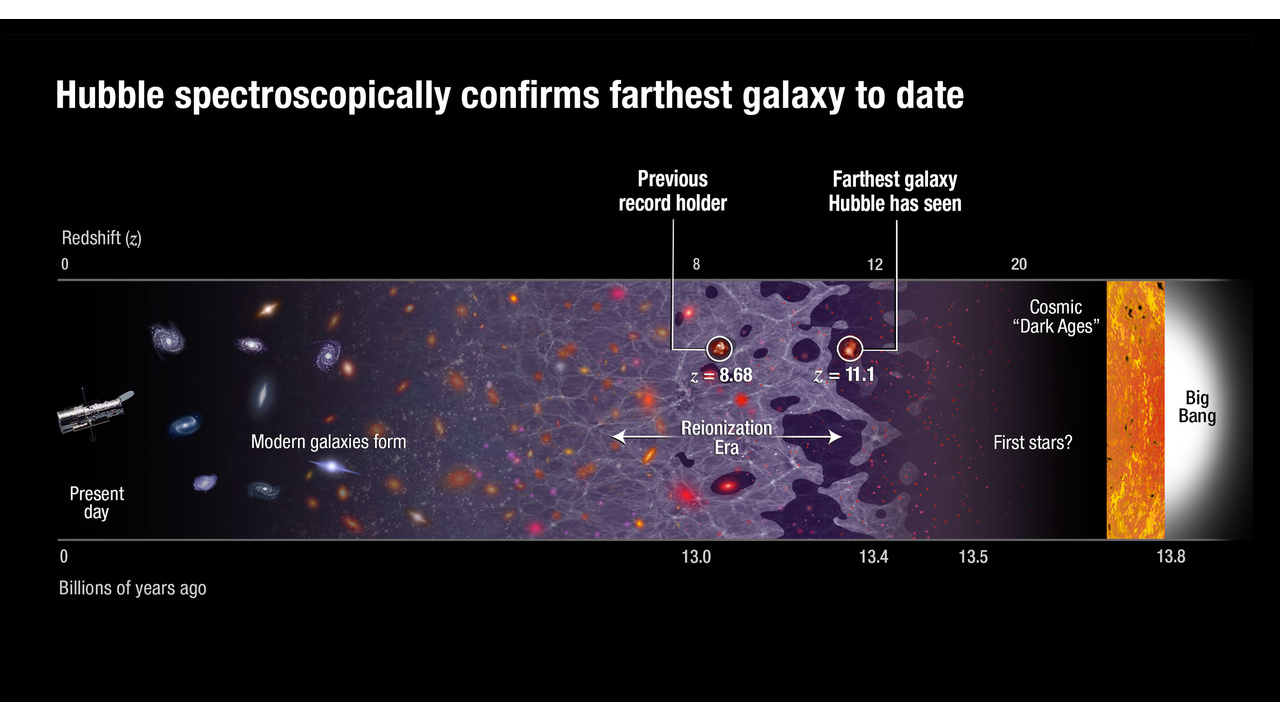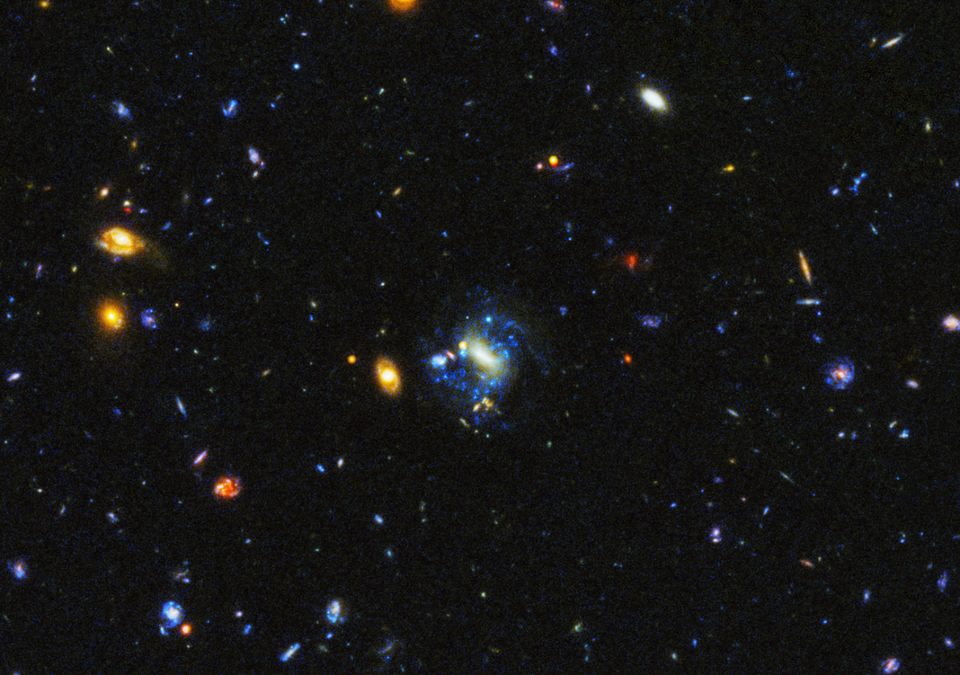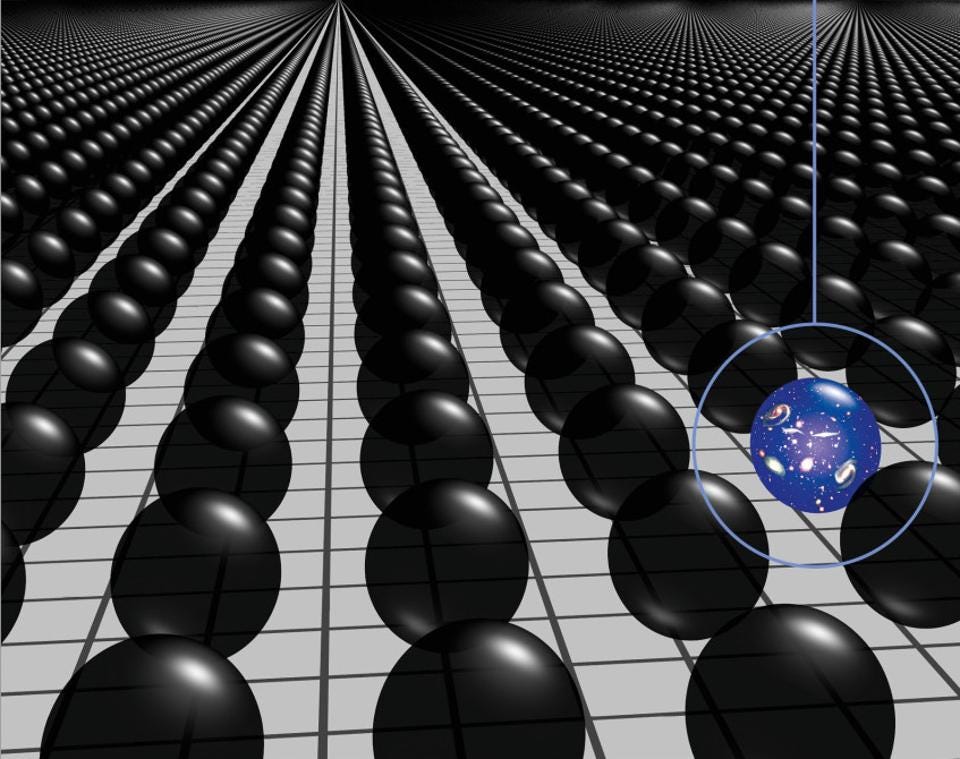The expanding Universe: 100 years later
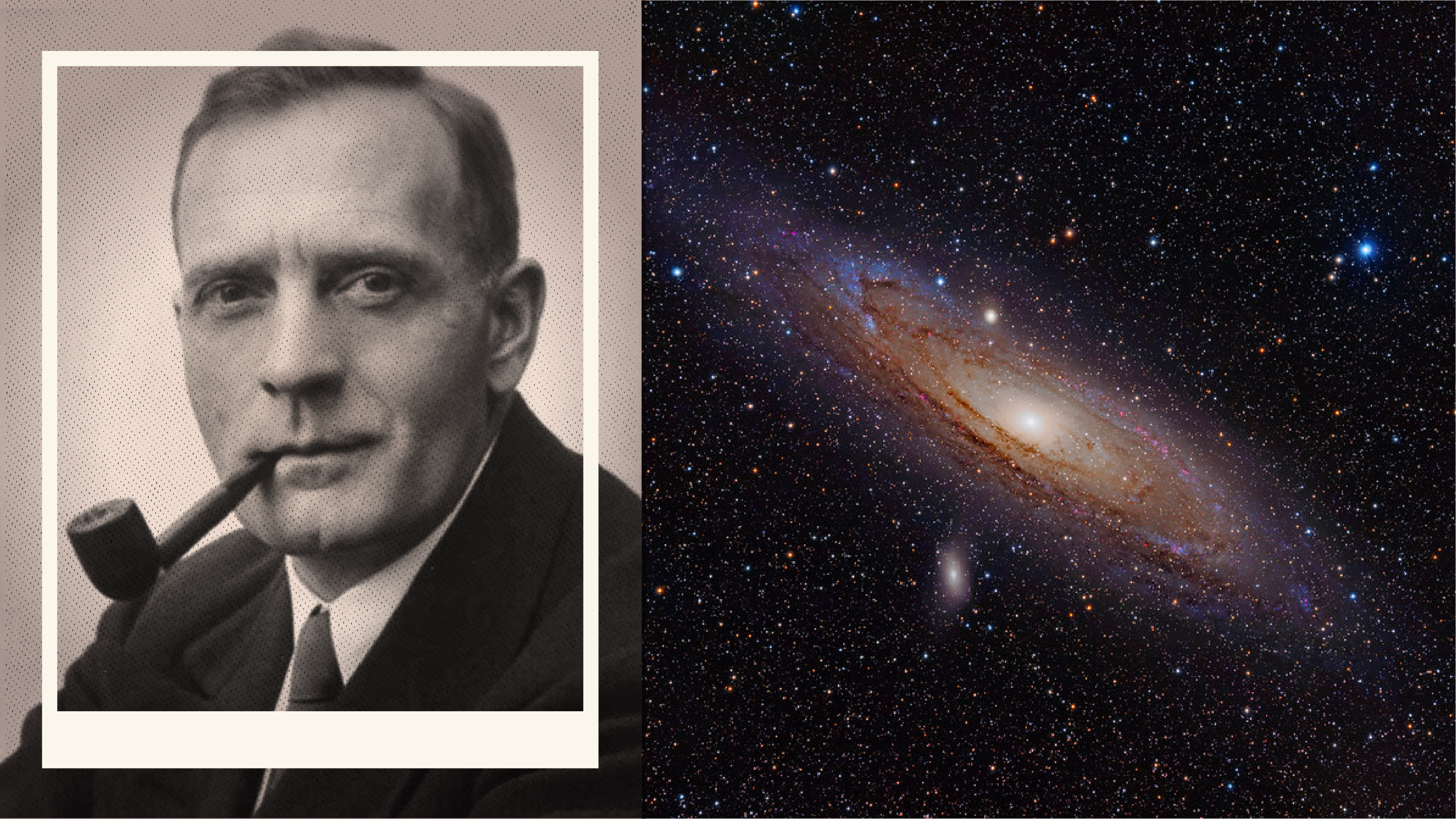
- One of the most surprising facts about the Universe is that it is neither static nor eternal: instead, it's expanding and has been doing so ever since its birth 13.8 billion years ago.
- But we didn't always know this was the case. 2023 marks the 100th anniversary of the first observational evidence that showed the Universe truly is expanding.
- Despite the objections and resistance of many, including Einstein, the evidence for the expanding Universe is overwhelming. Here's the story of its discovery.
From the moment in 1915 that Einstein released his theory of General Relativity out into the world, he knew he had a Universe-sized problem to reckon with. His new theory of gravitation was incredible in many ways. It reproduced all of its predecessor’s (Newtonian gravity) successes, from laboratory to Solar system scales. It successfully explained puzzles, like the precession of Mercury’s orbit, that Newtonian gravity could not. And it made several new predictions, like the deflection of starlight by massive objects, that differed from Newton’s old theories. By replacing Newton’s inverse square force law acting instantaneously between any two masses in the Universe with an underlying curved spacetime that affected and was affected by masses and all forms of energy, Einstein knew he was fomenting a scientific revolution.
But Einstein himself had a doubt about what he published. He knew, after all, that the Universe was full of matter: stars were present everywhere, in all directions, for as far as astronomers could see. And he knew that the positions of these stars seemed to be stable over time, moving slowly and randomly relative to ourselves and one another. But his own theory of gravitation, if he worked out the details, showed that if you had a collection of masses randomly distributed throughout the space it occupied, the underlying spacetime would be unstable. No matter what you did, it would inevitably collapse.
Originally a paradox to Einstein, this would become the starting point from which the expanding Universe was born. Here’s the story of how, 100 years ago, we took the critical step to get there.

Einstein’s big worry, although he didn’t realize it at the time, is actually a feature of General Relativity. If you have masses placed down all throughout your initially static spacetime, those masses will curve your spacetime’s fabric and cause it to evolve in a specific way: by collapsing. This isn’t the same type of gravitational collapse you’d get in Newtonian gravity, where the masses simply attract one another and accelerate toward one another until they meet. Instead, the fabric of spacetime itself evolves by collapsing into itself, drawing the various masses into a central point that becomes a singularity: where space and time end in a state of infinite density.
In order to prevent this from happening, Einstein turned to the only place he could think of: the cosmological constant. The only term you’re allowed to add into Einstein’s field equations, in General Relativity, without destroying the theory’s successes is a constant term that affects the underlying metric: i.e., the structure of spacetime itself. That term, known as a cosmological constant, could counteract the gravitational collapse that would occur in an otherwise matter-rich Universe, enabling spacetime to remain static and stable. It was an ugly fix with no underlying physical motivation, but Einstein recognized that a collapsing Universe would contradict the already-existent observations, and so he put it in to make his theory consistent with the Universe as he knew it.

Other theorists, however, were less forgiving. Many pointed out that if the cosmological constant weren’t precisely tuned in a way that exactly counteracted the rate at which gravitation would draw spacetime into itself, things would either collapse or fly apart. That if there were any initial gravitational imperfections — if the masses weren’t perfectly uniformly distributed at the start — those imperfections would lead to the same consequence: things either collapsing or flying apart.
In 1917, Willem de Sitter considered the behavior of a Universe with only a cosmological constant (and no matter) in it, and discovered that it didn’t just expand, but expanded relentlessly: at an exponential rate. If you took two points separated by a certain distance, then after a finite amount of time, that distance would double, and then after that same amount of time elapses again, the distance between those points would double again, and so on and so on.
On the theoretical front, a huge advancement would come in 1922: when Alexander Friedmann calculated the behavior of a Universe that had, on average, equal amounts of energy distributed uniformly throughout it.

What Friedmann found — irrespective of whether that energy was a cosmological constant, matter, radiation, or any other type of energy — is that a “static” universe was an inherently unstable condition. If your Universe were equally filled everywhere with any form of energy, it must either expand or contract, with no exceptions.
But how did those theoretical predictions line up with what astronomers were observing when it came to the actual Universe?
The stars didn’t seem to hold a clue, as they appeared roughly uniformly distributed, with only small motions relative to ourselves and one another. But out among the stars were nebulae: fuzzy, faint, extended objects in the sky. Some of these nebulae, upon close inspection, were collections of stars, such as open star clusters or globular star clusters. Others were individual stars in the process of dying or evolving: the planetary nebulae. But a class of these faint, fuzzy objects — the spiral and elliptical nebulae — stood out for being different than the rest. Whereas these other objects moved only at a few tens of kilometers-per-second relative to our own Solar System, spiral and elliptical nebulae appeared to be moving much, much faster.

One key set of observations came from Vesto Slipher, who was a pioneer in leveraging the astronomical technique of spectroscopy. All objects that emit light do so over a variety of wavelengths: the total light they emit is the sum of light of all different wavelengths/colors added together. What spectroscopy involves is taking that panchromatic light and breaking it up into all of the separate wavelengths that compose it: for any individual object we’re interested in.
Slipher, in the 1910s, began taking the spectrum of a wide variety of objects, including many of the spiral and elliptical nebulae found throughout the sky. What he found was shocking to many.
- These spirals and ellipticals, instead of moving at a few tens of kilometers-per-second, moved at hundreds or even thousands of kilometers-per-second.
- Although a few of them were blueshifted, indicating a motion toward us, most of them were redshifted, indicating a motion away from us.
- And that the smaller the spiral or elliptical nebula appeared, the greater the magnitude of its motion, and the more likely it was to be redshifted rather than blueshifted.
It was suggestive evidence — but not conclusive proof — that these spirals and ellipticals were objects well beyond and outside our own home galaxy, the Milky Way. If so, perhaps it meant that the Universe wasn’t static, after all.

The very first key piece of evidence that would take the notion of the expanding Universe from a theoretical curiosity with speculative observational evidence to the leading description of the Universe we inhabited arrived quite by surprise in 1923: one year after Friedmann’s theoretical tour de force and just a few years after Slipher’s key spectroscopic observations.
That evidence would come from Edwin Hubble and the most powerful telescope of those times: the 100-inch Hooker telescope. With a new, larger telescope than ever before at his disposal, Hubble could achieve greater resolution and gather more light than ever before, making it possible to tease out fainter, more distant details about objects than ever before.
One of Hubble’s early projects was categorizing novae: luminous flare-ups that occur atop the corpses of old, deceased stars. When enough matter accumulates on these stellar remnants, a brief burst of nuclear fusion occurs, causing a rapid brightening and a more gradual fadeaway thereafter. Hubble was looking for novae in the closest, largest spiral nebula to us: Andromeda. In 1923, over the course of a few nights, Hubble found what looked to be a nova in Andromeda in one location, and then he found a second, and then a third. And then, the unimaginable occurred.
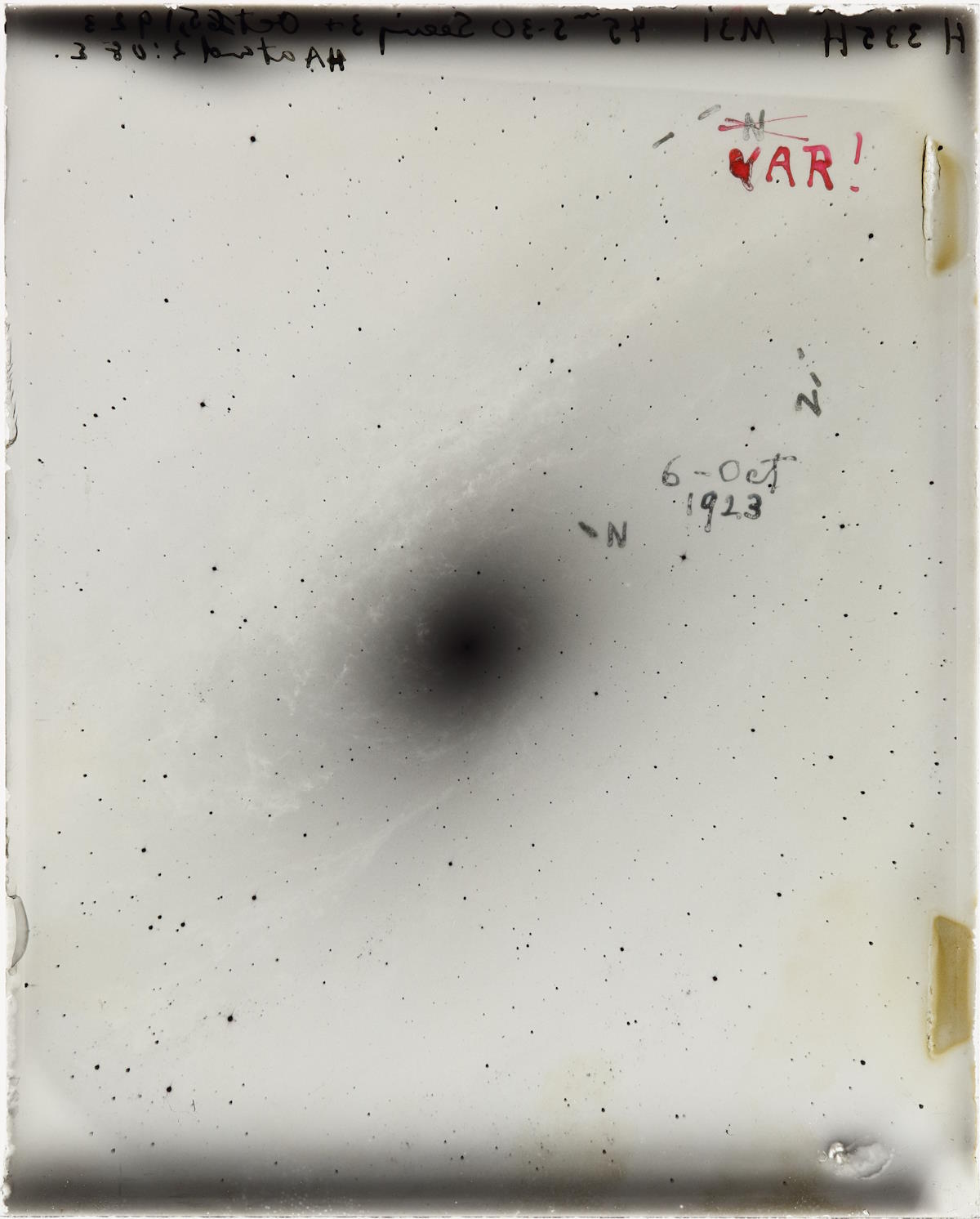
Did you guess, “What, he found a fourth nova?”
If so, it’s a good guess; in fact, it’s the same guess Hubble had as to what he expected to find. But that fourth nova — or rather, the fourth major brightening event — that he saw, somehow, occurred in the exact same position that the first nova did. Even back in 1923, Hubble knew that was impossible; it must take novae centuries or even millennia to accumulate enough matter to flare like they do. While in modern times, we’ve observed a few recurring novae with timespans of decades or even just a handful of years, almost all of them are one-and-done on human timescales, and none recur on timescales of less than a year.
But what Hubble found was that this point of light in Andromeda didn’t just brighten a second time, but did so over and over again, with a regular periodicity. We had known about stars like this for a long time: since the late 1800s and the work of Henrietta Leavitt. These stars are known as Cepheid variables, and they drop from a peak brightness to a minimum brightness and then rise again back to the peak, all with a regular period. These bright, blue stars are varying because their outer layers are pulsing, regularly expanding and contracting, and changing temperature and brightness when they do. Every few days, a Cepheid variable star goes from peak brightness to minimum brightness and back again, regularly, in a predictable fashion. What Hubble initially identified as a nova was, in fact, a variable star.

But Leavitt’s work went beyond describing the behavior of a Cepheid; it also suggested a remarkable relationship. Leavitt noticed that the peak brightness of a Cepheid was correlated with how quickly it varied: from peak brightness to minimum brightness and back again. If you measured the period of a Cepheid, you could immediately know — from all the other Cepheids that had been measured — how intrinsically bright it was.
That was all the help Hubble needed to take the next giant leap forward for astronomy: to use the observed brightness of this Cepheid in Andromeda, along with Leavitt’s method for inferring the star’s intrinsic brightness, to determine how far away the star had to be. If you know you’re looking at a 100-Watt light bulb and measure a certain brightness for it, you can infer how far away it is from the brightness you observe. Using that same method, Hubble determined the distance to this star (and therefore, to Andromeda), and determined that it was somewhere close to 1 million light-years away from us: far beyond any of the known stars within the Milky Way. (Modern methods place the distance to Andromeda at about 2.5 million light-years.)
Just like that, Hubble demonstrated that these spirals and ellipticals were located outside of the Milky Way, and even measured the distance to the first one. Using this same method, he realized he could measure the distance to any galaxy in the Universe where his telescope was powerful enough to resolve individual Cepheid variables inside.

If you were alive at that time and were following this saga closely, including:
- the theoretical development that a static and stationary universe could not be stable,
- Friedmann’s work indicating that a universe filled with “stuff” must be either expanding or contracting,
- Slipher’s work indicating that spirals and ellipticals moved at great speeds, with the faintest, potentially most distant spirals and ellipticals showing the greatest recession speeds,
- and Hubble’s work, measuring individual stars within a spiral or elliptical to determine their distance,
you could’ve been among the first to put these pieces together and conclude, “the Universe is expanding.”
Hubble immediately went to work measuring the Cepheids found within more and more of these spirals and ellipticals, obtaining distance measurements as a result. As one might have expected, the farther away a spiral or elliptical was determined to be, the greater the likelihood you had of finding that it was redshifted at a significant speed. This redshift wouldn’t be due to just a simple motion away from us, but rather — as illustrated above — because the light that this object emitted was getting stretched by the expanding Universe during its journey: from emission at the source to its eventual absorption by astronomers and telescopes here on Earth.

Over the next few years, the data to emerge from the Hooker telescope became better and more comprehensive. In 1927, Georges Lemaître became the first to put all of these pieces together in a published work, concluding that the Universe was expanding. In 1928, Howard Robertson independently drew the same conclusion, and Hubble presented evidence for the redshift-distance relation — the key observation behind the expanding Universe — in 1929. Throughout the 1930s, with increasingly better data, more and more scientists abandoned the idea of a static Universe, with Einstein eventually coming around and decrying the insertion of his cosmological constant back in the initial formulation of General Relativity as his “greatest blunder.”
Although the expanding Universe has been confirmed and validated by many lines of evidence, the last key puzzle piece that allowed us to discover it was firmly in place back in 1923: a full 100 years ago as of this year (2023). The underlying fabric of the Universe, spacetime, is not a static entity, but rather it evolves over time, dragging matter and radiation along with it and stretching the wavelength of radiation that passes through it to greater, longer distances. The farther away a galaxy is from us, the greater in magnitude its observed redshift will be. We’ve understood this for a full century now, and all of our other cosmic successes, from the Big Bang to our current ΛCDM paradigm, wouldn’t have been possible without this key piece of early evidence.


